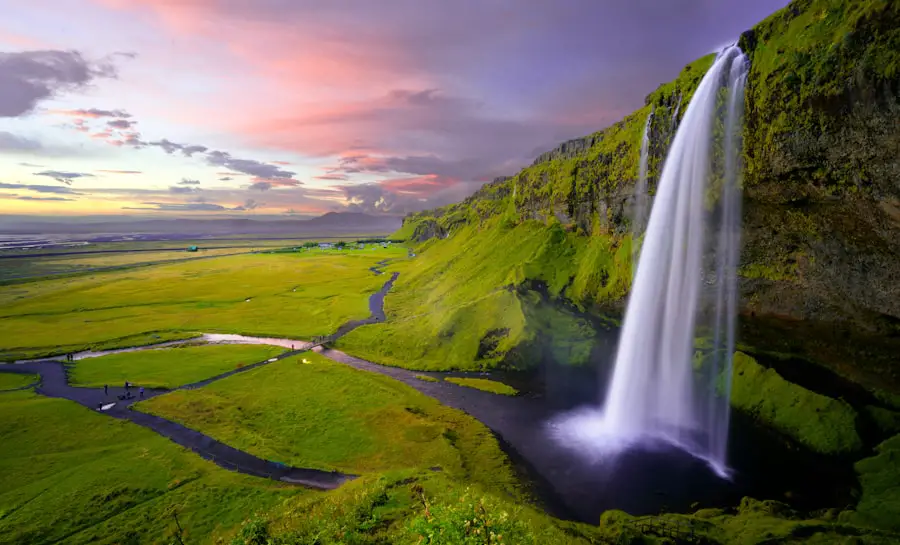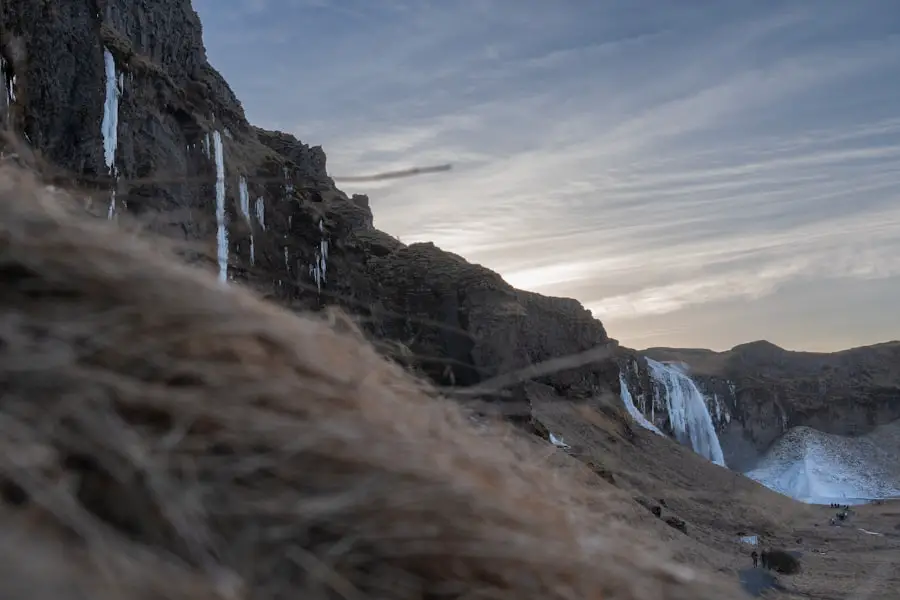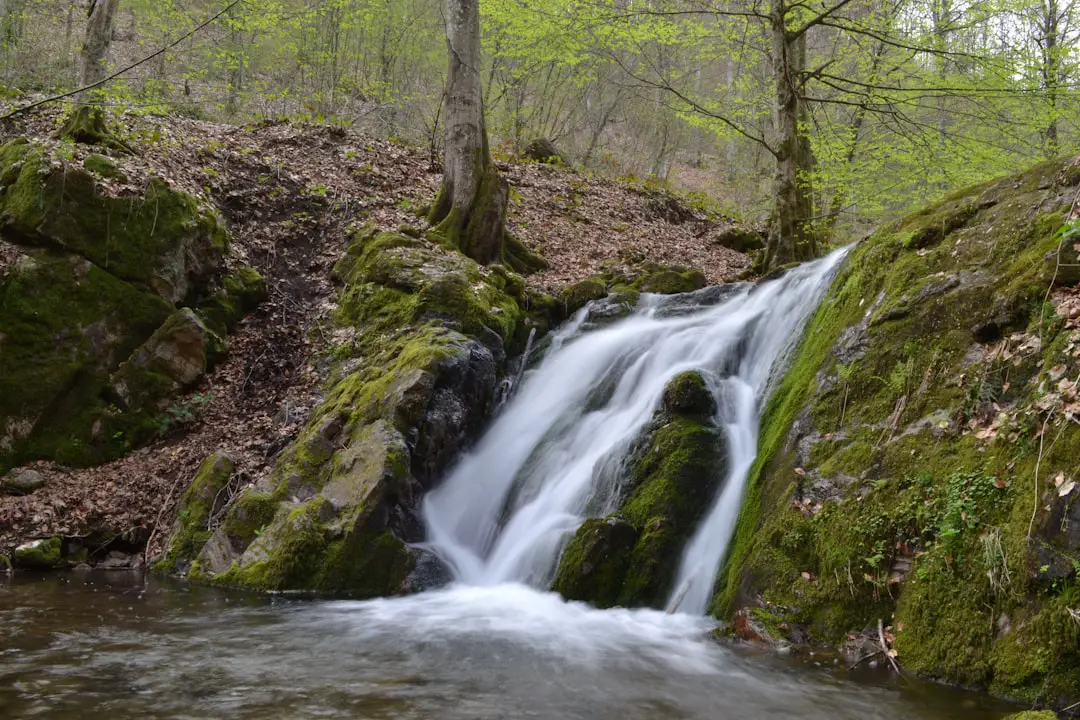🏞️ Introduction: The Majestic Story of Dry Falls, Washington
Dry Falls, located in central Washington State, is a breathtaking geological wonder with a rich blend of natural history and cultural significance. Once the site of a waterfall larger than Niagara Falls, this dramatic landscape was shaped over 13,000 years ago during the last Ice Age by one of the most powerful flooding events in Earth’s history.
This awe-inspiring feature was carved by the Missoula Floods—massive glacial outburst floods that swept across the region when ice dams containing Glacial Lake Missoula collapsed. These catastrophic torrents of water sculpted the cliffs, coulees, and canyons that define Dry Falls today. At its peak, water once thundered over a four-mile-wide cliff, leaving behind a vast amphitheater of basalt rock and a dry canyon that tells a story of ancient cataclysms.
Long before European settlers arrived, the area was revered by indigenous tribes such as the Spokane and Colville, who used the land for hunting and gathering. Their oral traditions often reference the powerful natural events that shaped the region’s dramatic topography.
In the mid-19th century, European settlers were drawn to the region by its fertile soils and natural resources. Among them were early geologists and explorers, who were captivated by Dry Falls’ scale and began studying its origin. Their discoveries helped unravel the mysteries of Ice Age flooding and contributed to a broader understanding of North American geology.
Today, Dry Falls stands not only as a natural marvel but also as a protected state park, allowing visitors from around the world to explore, learn, and be inspired by this prehistoric landscape.
✅ Key Takeaways
-
Dry Falls was once a colossal waterfall, formed during the last Ice Age by the catastrophic Missoula Floods.
-
The site’s dramatic cliffs and landscape were carved from basalt rock through powerful erosion and sediment transport.
-
The Dry Falls area supports rich biodiversity, including mule deer, coyotes, eagles, and native flora like sagebrush and bunchgrass.
-
Popular activities for visitors include hiking scenic trails, birdwatching, wildlife photography, and exploring geological features.
-
Travel tips: Bring plenty of water, wear sunscreen, use sturdy hiking shoes, and stick to marked trails for a safe and enjoyable visit.
The Geology Behind Dry Falls
The Formation of Dry Falls
The formation of Dry Falls is primarily attributed to the Missoula Floods, a series of catastrophic floods that occurred during the late Pleistocene epoch. These floods were triggered by the periodic melting of glaciers in North America, which created vast lakes behind ice dams. When these dams failed, they unleashed colossal volumes of water that surged across the landscape, carving out valleys and creating features like Dry Falls.
The Composition of the Cliffs
The cliffs of Dry Falls are composed of basalt rock, which is a result of ancient volcanic activity in the region. As lava flowed from fissures in the earth’s crust, it cooled and solidified into layers of basalt. Over time, the relentless force of water from the floods eroded these layers, creating the dramatic cliffs and terraces that we see today.
The Impact of Erosion and Sediment Transport
The sheer size of Dry Falls—over 400 feet high in some places—demonstrates the immense power of erosion and sediment transport. The surrounding landscape is also marked by other geological features such as coulees and potholes, which further illustrate the impact of glacial and fluvial processes on this unique environment.
The Wildlife and Flora of Dry Falls

The ecosystem surrounding Dry Falls is rich and diverse, supporting a variety of wildlife and plant species that thrive in this unique environment. The combination of cliffs, wetlands, and grasslands creates a habitat that attracts numerous birds, mammals, and reptiles. Birdwatchers can often spot species such as eagles, hawks, and various songbirds soaring above the cliffs or nesting in the crevices.
The area is also home to mammals like deer, coyotes, and rabbits, which find shelter in the shrublands and grasslands that surround the falls. Flora in the Dry Falls area is equally diverse, with a mix of native plants adapted to the arid climate. Sagebrush and bunchgrass dominate the landscape, providing essential cover for small animals and insects.
In springtime, wildflowers burst into bloom, painting the hillsides with vibrant colors. Species such as lupine and Indian paintbrush add to the visual splendor of the region. The wetlands at the base of Dry Falls support a different array of plant life, including cattails and reeds, which provide critical habitat for amphibians and aquatic insects.
This rich biodiversity not only enhances the beauty of Dry Falls but also plays a vital role in maintaining ecological balance.
Activities and Recreation at Dry Falls
| Activities and Recreation at Dry Falls | Details |
|---|---|
| Hiking | Miles of scenic trails for all skill levels |
| Picnicking | Picnic areas with beautiful views |
| Fishing | Fishing opportunities in nearby lakes and streams |
| Wildlife Viewing | Chance to see various wildlife species |
| Photography | Stunning landscapes for photography enthusiasts |
Dry Falls offers a plethora of recreational opportunities for visitors seeking to explore its stunning landscapes.
The trails vary in difficulty, catering to both casual walkers and more experienced hikers looking for a challenge.
Along these paths, visitors can enjoy interpretive signs that provide insights into the geological history and ecology of Dry Falls. In addition to hiking, photography enthusiasts flock to Dry Falls to capture its dramatic vistas. The interplay of light on the cliffs during sunrise and sunset creates stunning photographic opportunities that showcase the area’s natural beauty.
For those interested in fishing or birdwatching, nearby lakes and wetlands offer excellent spots to observe wildlife in their natural habitats. Additionally, picnicking areas are available for families looking to enjoy a meal surrounded by nature’s splendor. The combination of outdoor activities makes Dry Falls an ideal destination for nature lovers and adventure seekers alike.
🧭 Visiting Tips
When planning a visit to Dry Falls:
-
Weather: Spring and fall offer milder temperatures and fewer crowds.
-
Preparation: Bring plenty of water, wear sunscreen, and use sturdy hiking shoes.
-
Safety: Stay on designated trails and maintain a respectful distance from wildlife.
-
Photography: A tripod can be useful for capturing images during low-light conditions.
-
Education: The Dry Falls Visitor Center provides interpretive displays detailing the geological history of the area .
The Importance of Preserving Dry Falls

Preserving Dry Falls is essential not only for its geological significance but also for its ecological value and cultural heritage. As a site that showcases unique geological formations resulting from ancient cataclysmic events, it serves as an outdoor classroom for geologists and students alike. Understanding these processes helps us appreciate Earth’s history and informs our knowledge about climate change and natural disasters.
Moreover, Dry Falls holds cultural significance for local indigenous tribes who have deep connections to this land. Protecting this area ensures that future generations can continue to learn about their heritage and maintain their cultural practices tied to the landscape. Conservation efforts also play a crucial role in safeguarding the diverse wildlife habitats found within the park.
By preserving these ecosystems, we contribute to biodiversity conservation efforts that are vital for maintaining ecological balance in an ever-changing world.
Nearby Attractions and Accommodations
Visitors to Dry Falls will find a variety of nearby attractions that complement their experience at this natural wonder. One notable site is Sun Lakes-Dry Falls State Park itself, which offers additional recreational opportunities such as camping, boating, and swimming in nearby lakes. The park’s scenic beauty provides an excellent backdrop for outdoor activities while allowing visitors to immerse themselves further in nature.
For those interested in history, a short drive will take you to the town of Coulee City, where you can explore local museums that highlight the region’s rich past. Additionally, Grand Coulee Dam is another nearby attraction worth visiting; it stands as one of the largest concrete structures in the United States and offers guided tours that delve into its engineering marvels and historical significance. Accommodations near Dry Falls range from campgrounds within Sun Lakes-Dry Falls State Park to hotels in nearby towns like Coulee City or Electric City.
These options cater to various preferences and budgets, ensuring visitors have comfortable places to rest after a day filled with exploration.
🗓️ The Best Times to Visit Dry Falls, Washington
Choosing the best time to visit Dry Falls depends on your preferences for weather, crowd levels, and the type of outdoor experience you’re seeking. Fortunately, this geological wonder offers something unique in every season.
🌼 Spring (April to June)
Spring is widely considered one of the most ideal seasons to visit Dry Falls. Temperatures are comfortably mild, ranging from 60°F to 75°F (15°C to 24°C), making outdoor activities like hiking and photography more enjoyable. This time of year also brings blooming wildflowers, adding vibrant colors to the arid landscape and enhancing its natural beauty.
Spring typically sees fewer tourists compared to summer, allowing for a more peaceful and immersive experience.
☀️ Summer (July to August)
Summer draws the largest crowds, as families take advantage of school vacations. While daytime temperatures can be quite warm, visiting during the early morning or late afternoon can help you avoid peak heat and heavy foot traffic.
This is a great time for camping, fishing, and exploring the state park’s amenities, but be prepared with plenty of water, sunscreen, and sun protection gear.
🍁 Fall (September to October)
Fall is another excellent season to explore Dry Falls. Temperatures remain pleasant, and the foliage begins to transition to autumn colors, creating stunning photo opportunities against the backdrop of the dramatic cliffs.
Crowds start to taper off in early fall, making this a great time for hiking, birdwatching, and enjoying the crisp air.
❄️ Winter (November to March)
Winter brings quiet solitude, perfect for those seeking a peaceful retreat. However, visitors should be aware of colder temperatures and the possibility of snow or ice on some trails, which may impact accessibility.
If you’re prepared for chilly weather and plan ahead, winter can offer striking, serene views without the crowds.
❓ Frequently Asked Questions
What is Dry Falls in Washington?
Dry Falls is a geological formation consisting of steep cliffs formed by the catastrophic flooding of ancient glacial Lake Missoula during the last ice age.
How was Dry Falls formed?
It was formed by massive floods resulting from the breaking of an ice dam containing glacial Lake Missoula, which carved out the landscape and created the cliffs of Dry Falls.
How big is Dry Falls?
Dry Falls is approximately 3.5 miles wide and 400 feet high, making it one of the largest known waterfalls in geological history.
Can you visit Dry Falls?
Yes, Dry Falls is part of the Sun Lakes-Dry Falls State Park and is open to visitors, featuring viewpoints and interpretive displays.
What activities can you do at Dry Falls?
Visitors can enjoy hiking, picnicking, wildlife viewing, birdwatching, photography, and educational programs offered by the park.
